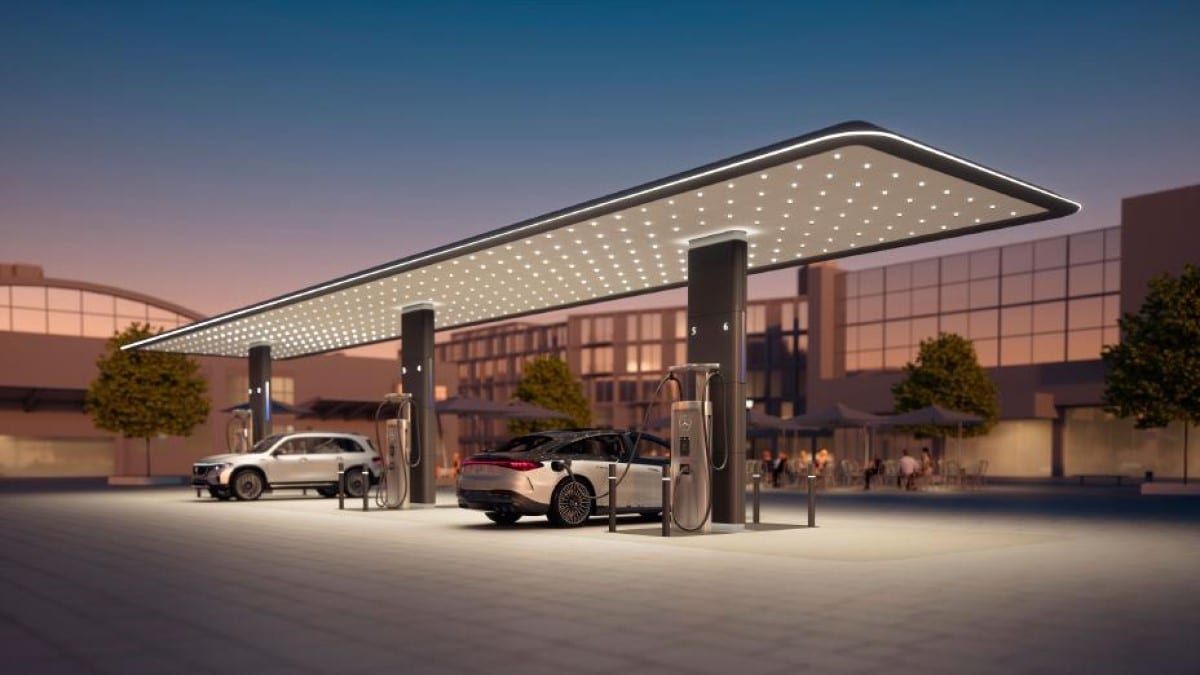
America should massively enhance the variety of charging stations accessible to assist the fleet of electrical autos (EVs) People might personal by 2030. However virtually all of them might be in non-public properties.
A brand new report from the Nationwide Renewable Power Laboratory, a federally-funded analysis lab, finds America may have as many as 28 million chargers by 2030.
However simply 182,000 of them would be the quickest sort.
America Trailing the World
The NREL finds that, globally, EVs “accounted for 14% of the light-duty market in 2022.” China, at 29%, and Europe, at 21%, led the world. Within the U.S., gross sales have reached simply 7-10% of the automobile market.
Associated: People Purchased Almost 1.2 Million EVs Final Yr
Federal coverage “targets 50% of U.S. passenger automobile and lightweight truck gross sales as zero-emission autos (ZEV) by 2030, and California has established necessities for 100% light-duty ZEV gross sales by 2035,” in line with the NREL’s report. However People change vehicles at a gradual charge. So, even when greater than 50% of recent automobile gross sales are electrical, most autos on the street will stay gas-powered.
The laboratory initiatives America will want a charging community to assist about 33 million EVs by 2030. The most effective estimates put the variety of EVs on U.S. roads proper now at slightly below 3 million.
Varieties of EV Chargers
Engineers classify EV chargers into three ranges.
Associated: EV Chargers – Every part You Must Know
Degree 1 Chargers are basically simply energy cords. Included with each EV buy, a Degree 1 charger plugs into a regular wall outlet. It might probably take greater than 24 hours to recharge most EVs at Degree 1.
Degree 2 Chargers, additionally referred to as vacation spot chargers, require a 240-volt connection like many garments dryers and electrical stoves. EV homeowners usually pay to have one put in of their properties, and lots of buying facilities in city and suburban areas have begun putting in them in parking tons. These chargers can recharge most EVs in six to eight hours.
Degree 3 Chargers, additionally referred to as DC quick chargers, are refrigerator-sized items usually put in at freeway relaxation stops and different areas the place drivers might have to recharge rapidly. They’ll cost many EV batteries to about 80% in underneath an hour. Many producers suggest that drivers don’t cost to greater than 80% until they’re on a street journey. This charging technique helps protect battery life.
Nearly All Charging Can Occur At House, Work
Fuel stations, the NREL notes, “usually require devoted stops to public places.” However EV charging can occur principally at locations you already park your automobile.
With that in thoughts, the company estimates that 26.8 million of the wanted 28 million chargers might be “privately accessible Degree 1 and Degree 2 charging ports situated at single-family properties, multifamily properties, and workplaces.”
Associated: How A lot Does It Value To Cost An Electrical Automobile?
Most drivers may meet most of their driving wants by charging at residence and work at Degree 1 and a couple of chargers. They’d not often want a cease to cost in public.
As well as, the company suggests 1 million Degree 2 chargers “in high-density neighborhoods, at workplace buildings, and at stores.” Drivers may use these throughout around-town journeys in the event that they wanted to high off.
A community of 182,000 Degree 3 quick chargers “alongside freeway corridors and in native communities” would assist long-distance journey.
The company says that charging networks may look completely different from one neighborhood to a different. “For instance, densely populated areas would require vital investments to assist these with out residential entry and ride-hailing electrification, whereas extra rural areas are anticipated to require quick charging alongside highways to assist long-distance journey for these passing by means of.”
This Requires a Psychological Shift
People are used to seeing gasoline stations throughout them on their travels. Many people take consolation from the notion that we will refill virtually wherever.
The NREL says that that gained’t be true of a mature, nationwide charging community. The company suggests we study to think about the nationwide charging community as a tree.
The company explains, “There are components of the nationwide charging community which are seen and people which are hidden. Public charging is the seen a part of the community that may be seen alongside highways, at fashionable locations, and thru knowledge accessible on-line. Non-public charging is the hidden a part of the community tucked away in private garages, at condominium complexes, and at sure kinds of workplaces. This non-public community is akin to the roots of a tree, as it’s foundational to the remainder of the system.”
The picture brings new forex to the time period “vary nervousness.”
It might require drivers to shift their understanding of how they refill their automobile, letting go of any nervousness about seeing lots of chargers round them.
Primarily, you refill a gas-powered automobile on the way in which to your vacation spot. You refill an EV if you get there. That requires fewer chargers on the way in which.